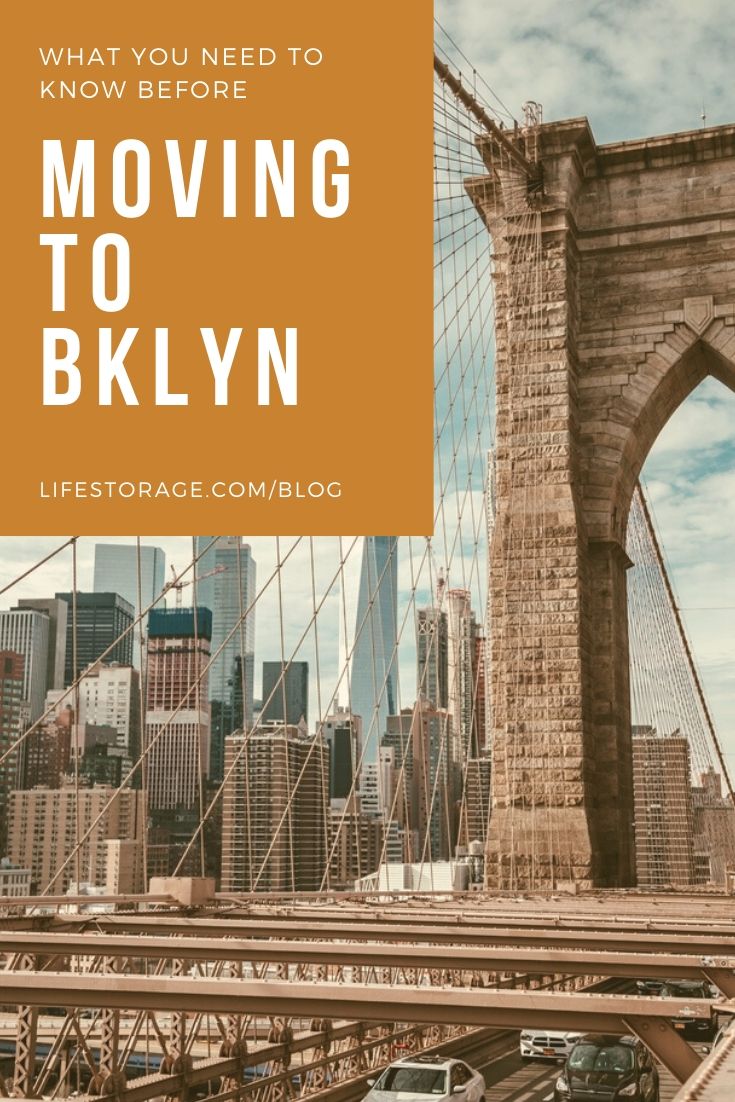
Are you thinking of moving to Brooklyn? Of New York City’s five boroughs, Brooklyn (also known as Kings County) is the largest (69.5 square miles) and most populous. In fact, if Brooklyn were its own city—as it once was until the late 1800s—it would be the third-largest city in the U.S. with over 2.5 million residents, second to Los Angeles and Chicago. It’s no wonder that Brooklyn is so iconic.
But while Brooklyn may be portrayed as a hipster playground full of quirky cafes and hip brunch spots, Kings County has so much more going on. The borough is full of rich history everywhere you look. Generations of immigrant enclaves have left their unique (and delicious) marks on the borough, making it the most ethnically diverse county in the nation.
Brooklyn continues to attract new-comers and families from all over with its excellent schools, booming job market, and a strong sense of community. If you’re considering moving to Brooklyn, here’s what you need to know in order to enjoy the borough to the fullest.
1. Brooklyn’s Neighborhoods are famous for good reasons.
Many of Brooklyn’s most popular neighborhoods are famous even to those who have never set foot in the borough. For example, here are five noteworthy neighborhoods for you to explore as you consider your move to Brooklyn.

Brooklyn’s Williamsburg Neighborhood
This neighborhood has become the face of Brooklyn, thanks to countless films and TV shows that have been set here. If you seek the hipster experience and lifestyle, then Williamsburg is the place to be. Williamsburg has an abundant nightlife, brunch spots, art galleries, and dance clubs, so you’ll never be bored.
Brooklyn’s DUMBO
Those iconic street shots of the Manhattan Bridge that you see are taken, you guessed it, Down Under the Manhattan Bridge Overpass or DUMBO. This neighborhood is known for its amazing views of the Manhattan and the East River waterfront, abundance of tech startups, art galleries, and trendy markets.
Park Slope
Known for its historic buildings and brownstones, Park Slope is popular among young families and couples seeking a tight-knit community with good schools. Residents are just a quick walk from Prospect Park, Brooklyn Academy of Art, and the Central Library, as well as some of the best restaurants in Brooklyn.
Brooklyn Heights
Visiting Brooklyn Heights is like walking through the past, with the neighborhood’s historic districts, notable churches, and pre-Civil War brownstones. One of Brooklyn Heights’ most famous landmarks is the Brooklyn Heights Promenade, where hundreds of thousands of spectators gather for the 4th of July fireworks.
Bedford-Stuyvesant
This neighborhood is considered one of New York City’s great African-American cultural centers, with beloved local restaurants serving up classic Southern-style cooking. You’ll also find some of the city’s best Caribbean fare here. Bedford-Stuyvesant is another neighborhood with beautiful Victorian architecture, brownstones, and various historic districts.
2. In Brooklyn, the cost of living is high.
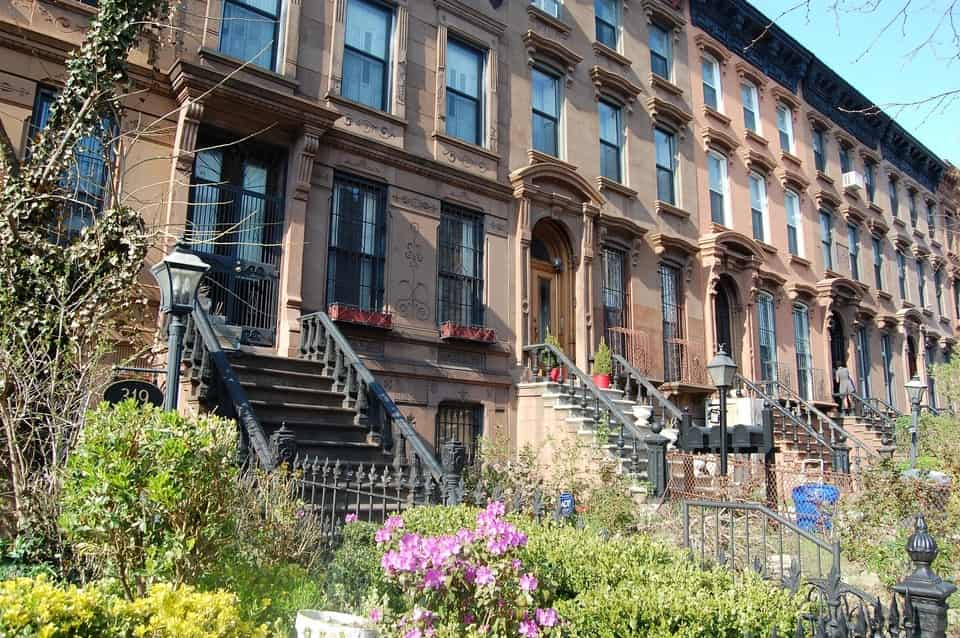
According to an October 2019 report by Streeteasy, Brooklyn’s average house price is around $700,000 and its average rental price is about $2,700 per month. This makes the borough one of the most expensive places to live in the U.S. So be prepared to do plenty of apartment and house hunting in order to find a good deal in the neighborhood you love.
Also, Brooklynites tend to define themselves based on which neighborhood they settle in, and they become loyal patrons to their local shops, cafes, restaurants, and bars. Make sure you weigh all your options and visit multiple neighborhoods before committing.
If there is one concession to Brooklyn’s high cost of living, it may be that you won’t need a car when you live here. More than half the residents in Brooklyn live in car-free households, according to Tri State Transportation.
3. Public transit is the way to go in Brooklyn.
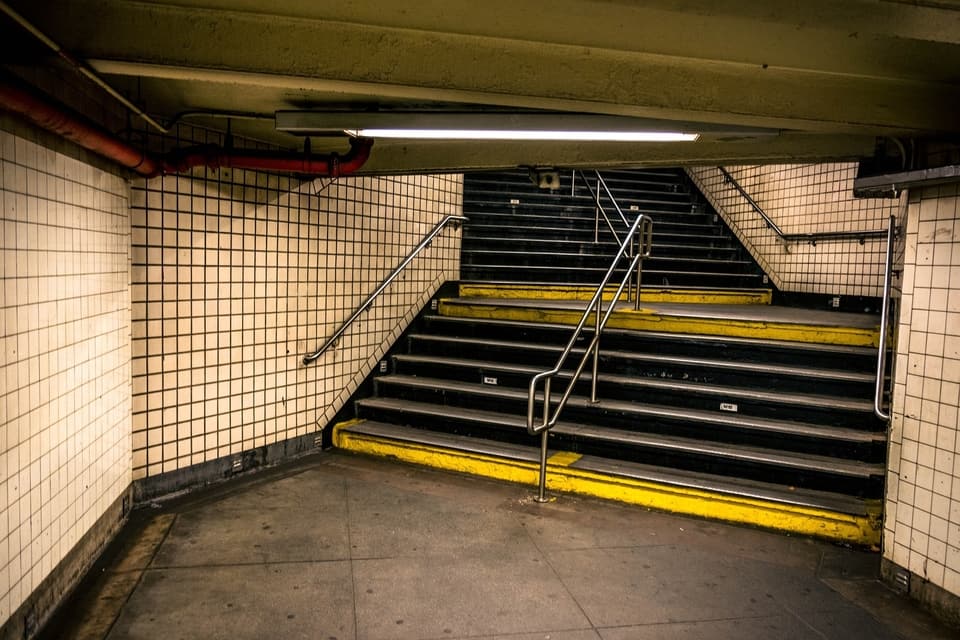
Although complaining about the New York City subway and the Metropolitan Transportation Authority (MTA) is a favorite pastime here in Brooklyn, the truth is that the subway is still the fastest and most reliable way to get around the city. There’s a reason why the NYC subway is world-famous: For just $2.75 a ride, you go anywhere you want to go in the city, at any time.
There are 170 subway stations in Brooklyn, and the borough’s major transit hub is Atlantic Terminal, which is served by the 2, 3, 4, 5, B, D, N, Q, R and W trains.
What Locals Know About New York City’s Subway System
On the topic of subway lines: They’re not created equal. While some lines like the 4/5/6 and 1/2/3 are fairly reliable, others — like the infamous R and G trains — get a bad rap with residents. The F train, in particular, has the lowest on-time rates in the entire subway system, according to a report by The New York Times.
Fortunately, the MTA is working hard to turn things around and get the subway performing like it did in its glory days. But until then, allow extra time for your commute, and bring a good book or download a podcast, because it may take a while—especially if you live further out into the borough.
New Resident Tip:
Be sure to download the MTA’s MYmta app, which will help you plan your commute and check for service disruptions.
Other Public Transportation in Brooklyn
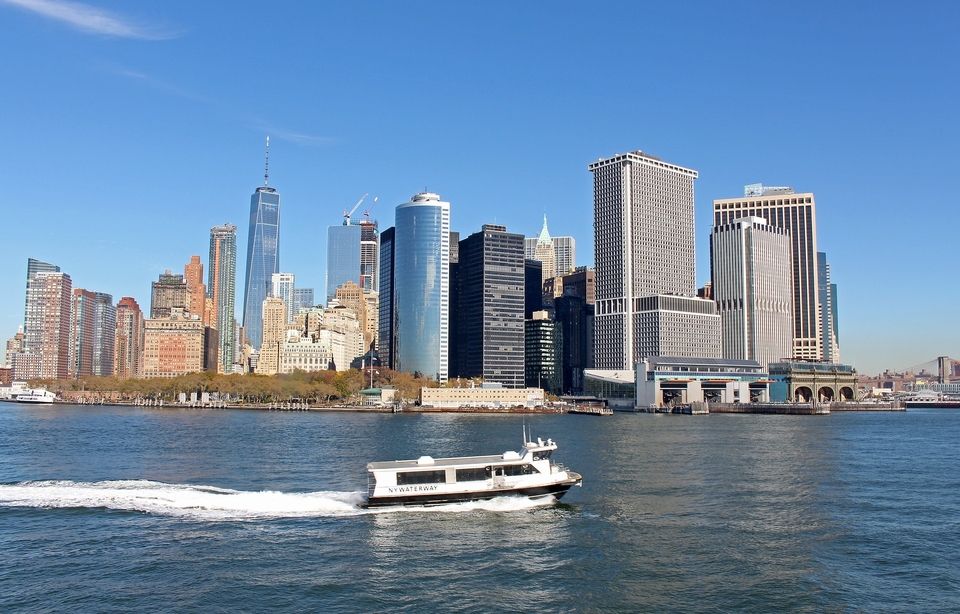
While the subway is the primary mode of transportation for people in Brooklyn, you shouldn’t overlook Brooklyn’s other modes of transit.
Buses
Brooklyn has 55 bus routes, many of them operating on former streetcar lines that date back to when the streetcar was the way to get around. Depending on where you’re trying to go within the borough, the bus might be a quicker and more straightforward mode of transportation. Just be sure to download the MTA’s Bus Time app, so you can keep track of when the buses are coming and going.
Brooklyn by Bicycle
America’s very first bike path was opened in 1894 along Ocean Parkway, one of Brooklyn’s main boulevards. Today, there are over 300 miles of bike lanes in Brooklyn, making the borough one of the most cyclist-friendly destinations in the nation. If you don’t own a bicycle, don’t worry! You can rent a Citi Bike (NYC’s very own bike share system). Explore Prospect Park, the waterfront, or even bike over the Manhattan Bridge for a—quite literally—breathtaking view.
Cabs
New York City is famous for its yellow cabs, but in Brooklyn, you’re much more likely to hail a green cab. Green cabs are designated to pick up passengers only in the outer boroughs, like Brooklyn and the Bronx. Don’t be confused if you don’t see many yellow cabs in your neighborhood. With that said, most people opt for the convenience of Uber and Lyft these days.
Brooklyn by Ferry
Ferries used to be a popular way of getting around the city in the early 1900s, but were largely discontinued in the ‘60s due to declining ridership. Fast forward to 2017, and the ferry began having its renaissance. By 2018, the NYC Ferry attracted 9 million annual riders, and that number is only poised to grow as the ferry system continues to expand and new stops are added throughout the city. For those who live along Brooklyn’s expansive waterfront, the ferry might be the most enjoyable (and quickest!) way to get around in Brooklyn or travel into Manhattan, especially on those hot summer days. You can get a world-class view of Downtown Manhattan, Governor’s Island, and the Statue of Liberty, all while paying the same fare as you would to take the subway.
Owning a Car in Brooklyn
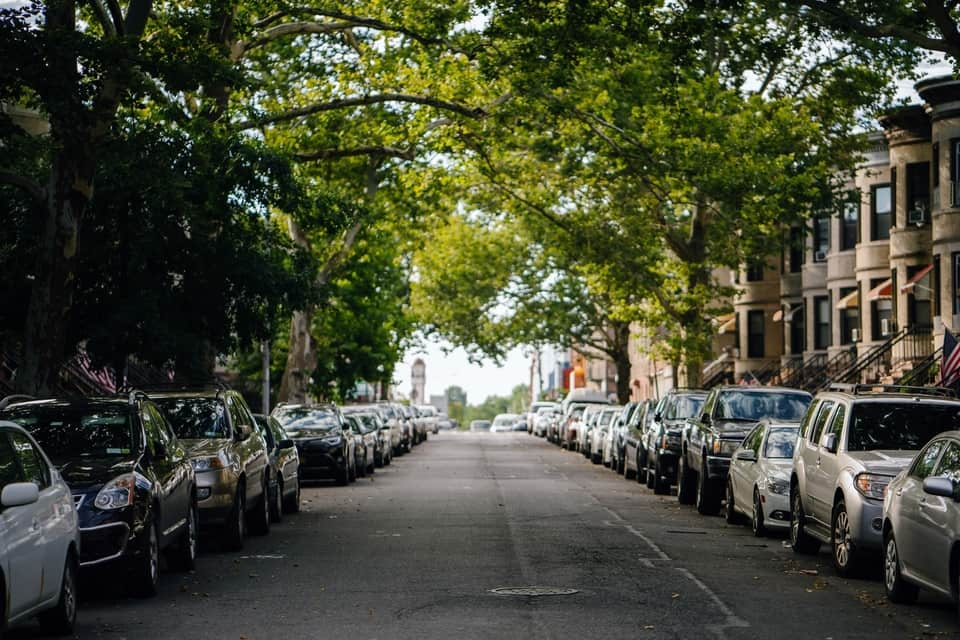
Without a parking permit system, street parking is tricky but not impossible in Brooklyn.
“New York City is the only major city in the country that doesn’t have a residential street parking permit system,” writes Gothamist journalist Stephen Nessen. This makes the parking situation difficult for car owners moving to Brooklyn depending on which neighborhood they settle in. Unless you’re willing to spring for a paid parking spot in a garage, which can set you back $200 to $300 a month in most Brooklyn neighborhoods, you will most likely be parking on the street.
In areas with mostly young professionals who prefer getting around by bike or train, street parking can be fairly easy as long as you’re mindful of your block’s street sweep schedule, which generally runs twice a week in Brooklyn.
In other more residential and family-oriented neighborhoods where many of the residents own SUVs for getting the kids around, the competition for street parking can be fierce. You may find yourself circling the block more than a few times.
So should you bring a car to Brooklyn?
Owning a car isn’t necessary for life in Brooklyn, as you can get anywhere you need to go by subway. But if you choose to bring one, don’t worry: parking isn’t impossible in Brooklyn. You will just want to become very familiar with the borough’s parking signs and alternate side parking rules in order to avoid hefty parking fines.
New Resident Tip:
If you want the convenience of accessing a car for a quick trip to the supermarket without the hassle of parking, hourly Car2Go rentals are a popular option in Brooklyn.
4. Brooklyn has a four-season climate, so dress accordingly.
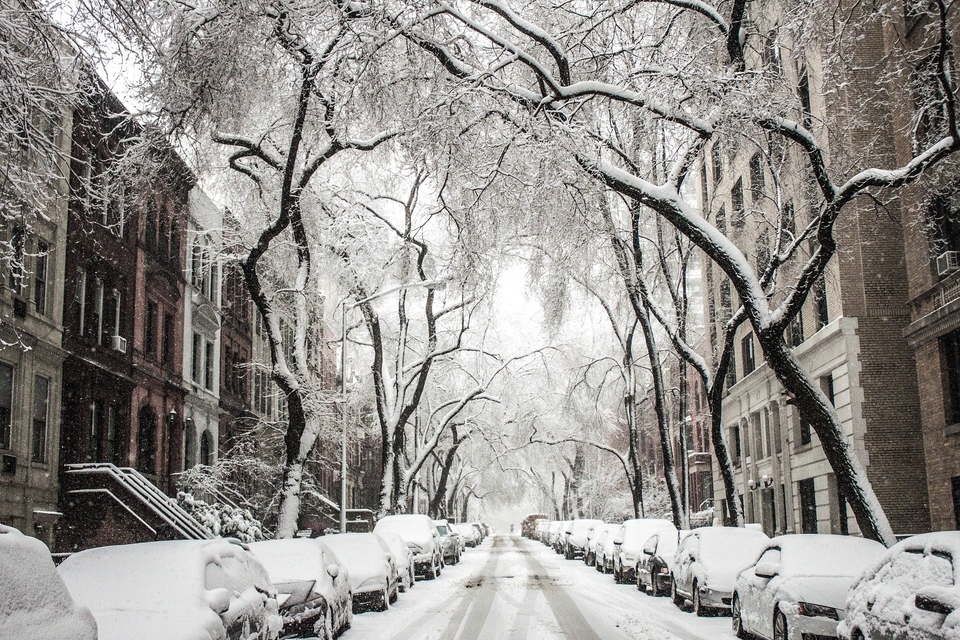
While it may not be as cold as Chicago or as hot as New Orleans, you’ll be out in the elements far more than you would be in most other cities after moving to Brooklyn. “New York City residents often walk more than people living in any other U.S. city,” writes the IBTimes. That goes for Brooklyn as well, so what you wear is very important.
Comfortable walking shoes are a must for every season. Bring a lot of them—New York City is notorious for wearing out shoes, since you’ll be pounding the pavement daily. You’ll also want an umbrella on hand, as it rains often in Brooklyn.
Brooklyn has four distinct seasons, and you’ll want appropriate clothing for each of them:
Winter
A warm, waterproof winter coat is a must-have, along with hats, gloves, and scarves. Thermals are also a great idea, as they help to cut down the chill on those extra windy days. You will also want some snow boots. While Brooklyn doesn’t get a ton of snow accumulation like other cities in the Midwest, it can get very slushy, and no one wants wet feet when commuting to work.
Spring
In spring, layering is essential, since the weather can be chilly and unpredictable well into the season. You’ll want to wear long sleeves, sweaters, and pants until about April. It’ll rain often, so be sure to bring a rain jacket or a trench coat with you.
Summer
While May into June are pleasantly warm, it quickly gets hot and humid in Brooklyn by July through mid-September. That means you’ll want to stock shorts, tank tops, light pants, and sundresses for your summers in Brooklyn. Just be sure to save your flip flops for your trips to Coney Island—New Yorkers generally avoid wearing flip flops around the neighborhood, as they break easily and don’t protect your feet from debris on the concrete. Opt for sneakers or sandals instead.
Fall
There’s a reason “Autumn in New York” is a jazz standard. The fall is one of the most pleasant seasons in New York, with bright blue skies and refreshing temperatures that are perfect for walking all around Brooklyn. A peacoat, scarf, and some comfortable boots are all that you’ll need until November.
New Resident Tip:
Many Brooklyn locals rent self-storage units for their off-season clothing and gear. Explore seasonal monthly storage rentals in Brooklyn with Life Storage and use our space calculator to figure out how much space you’ll need.
5. Brooklyn is a true melting pot for foodies.
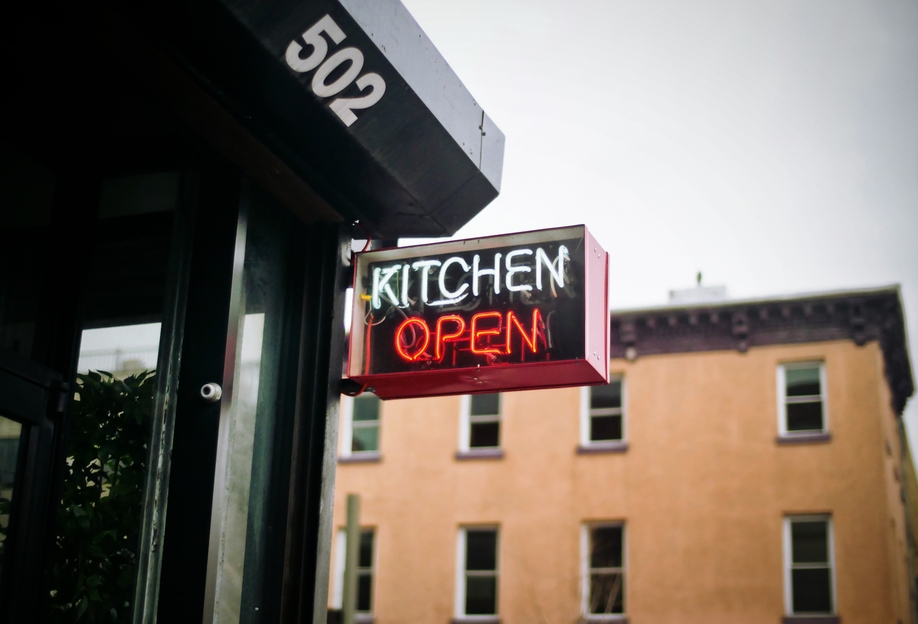
Brooklyn is a true melting pot, and you can see this best in the countless ethnic cuisines that are represented throughout the borough. From Jamaican jerk chicken and roti in Crown Heights to dim sum in Sunset Park’s “Little Fuzhou,” to sticky-sweet baklava in Sheepshead Bay, anything you have a craving for can be found in Brooklyn. New restaurants are constantly popping up, so there’s always a new spot to try out for a date night, family meal, or an evening out with friends.
With that said, sometimes you want to stick to the classics. There are a number of iconic restaurants in Brooklyn that have been serving generations of loyal diners.
Iconic Brooklyn Restaurants
- Nathan’s Famous: This international food chain has humble beginnings as a beachfront restaurant on Coney Island that opened in 1916. Today, Nathan’s is a landmark and the first destination for beach-goers who want to celebrate the start of summer with a good old fashioned hot dog.
- Bamonte’s: This is one of the city’s oldest restaurants, dating back to 1900. Bamonte’s is considered a true New York institution and the place to go for classic red-sauce, white-tablecloth Italian dining. One of the restaurant’s beloved waiters has been working at the restaurant for over 40 years.
- Junior’s Restaurant: Open since 1950, Junior’s is best known for its world-famous cheesecakes, but that’s not the only reason you should go. The restaurant’s old-school diner ambiance and Jewish deli classics like pastrami sandwiches make it an institution all its own.
- Tom’s Restaurant: This family-owned restaurant has been around since 1940, delivering delicious old-school diner classics like egg creams and cherry-lime rickets to Brooklyn’s Prospect Heights neighborhood. You’ll come for the all-day breakfast, but you’ll stick around for the fun retro kitschy decor. Just be sure to get there early on the weekends.
More Brooklyn Food Favorites
Brooklyn is particularly well-known for its Italian food—especially its pizza. Whether you like a crispy thin crust pizza or a soft pillowy Sicilian slice, you’ll find what you’re craving in Brooklyn at famous pizza establishments like L&B Spumoni Gardens in Bensonhurst, Totonno’s in Coney Island, and Di Fara’s Pizza in Midwood. The best pizzeria in Brooklyn is a hotly contested issue among long-time residents, so you’ll just have to visit all of them and decide for yourself.
And for those who plan their weekends around food, Smorgasburg is not to be missed. You can find it on Saturdays on the Williamsburg waterfront and on Sundays in Prospect Park during the summer, and indoors in Williamsburg during the winter. Smorgasburg features over 100 local vendors every weekend, so you can enjoy an excellent meal while supporting local and small businesses.
6. Parks and recreation in Brooklyn are far from a concrete jungle.
One of the things people love most after moving to Brooklyn is its abundance of green spaces. After a hectic day at work in Manhattan, these parks are an oasis of calm.
Prospect Park
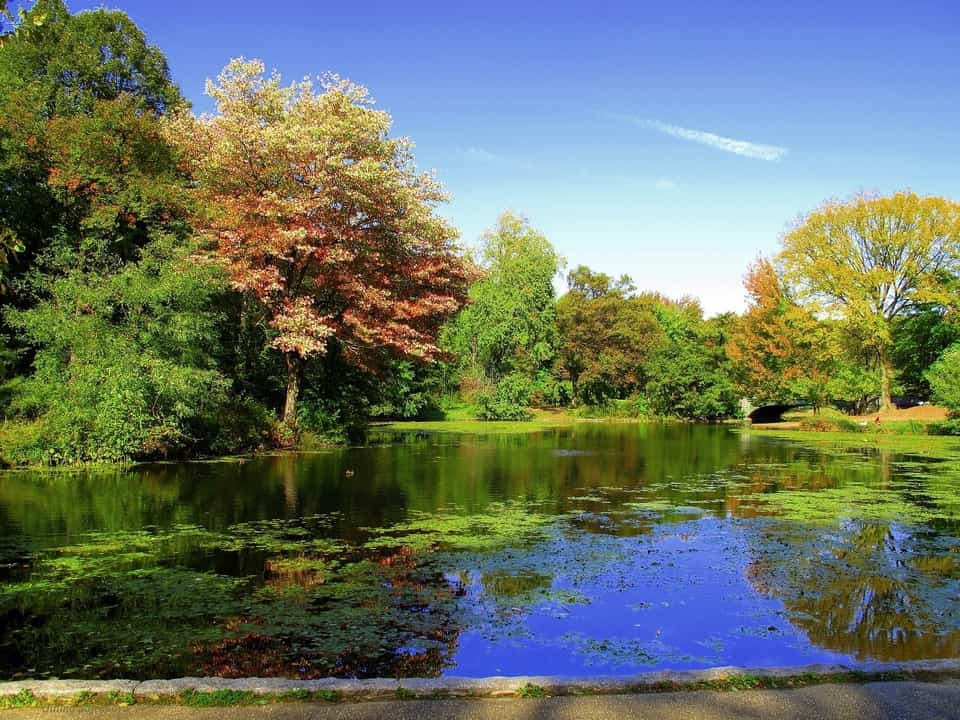
Manhattan is famous for Central Park, but if you ask most Brooklynites, Prospect Park is the place to be. Built in 1867, Prospect Park’s 90 acres include the borough’s only lake, a zoo, soccer fields, baseball fields, Litchfield Villa, and the Boathouse and Picnic House, both of which are popular wedding venues for trendy Brooklyn couples. The park is home to the Bandshell, which hosts free outdoor concerts every summer. Prospect Park is more rugged and wooded than Central Park, making it a popular place to seek serenity and escape from the hustle and bustle.
Brooklyn Bridge Park
This 85-acre park runs along the East River waterfront in Brooklyn Heights. The park is divided into multiple piers, all with their own sports facilities, art installations, lawns, terraces, and playgrounds for kids. Explore greenways, gardens, beaches, and restaurants, all without ever leaving Brooklyn Bridge Park.
Green-Wood Cemetery
Green-Wood Cemetery isn’t technically a park, but it feels like one with its beautiful rolling green hills. Did you know that in the 1800s, Green-Wood Cemetery was one of America’s most popular tourist destinations, attracting 500,000 visitors a year? “Day-trippers and tourists came to picnic and walk the shaded winding paths of Green-Wood,” writes 6sqft journalist Lucie Levine. “In fact, by 1860, the cemetery welcomed over 500,000 visitors per year, making it the second most popular attraction in all of New York State.” Today, Green-Wood Cemetery still draws crowds of people who want to take in the sights and spot one of the cemetery’s famous parrots.
And don’t forget about Brooklyn’s beach scene. There are three beaches, all in Southern Brooklyn:
Coney Island
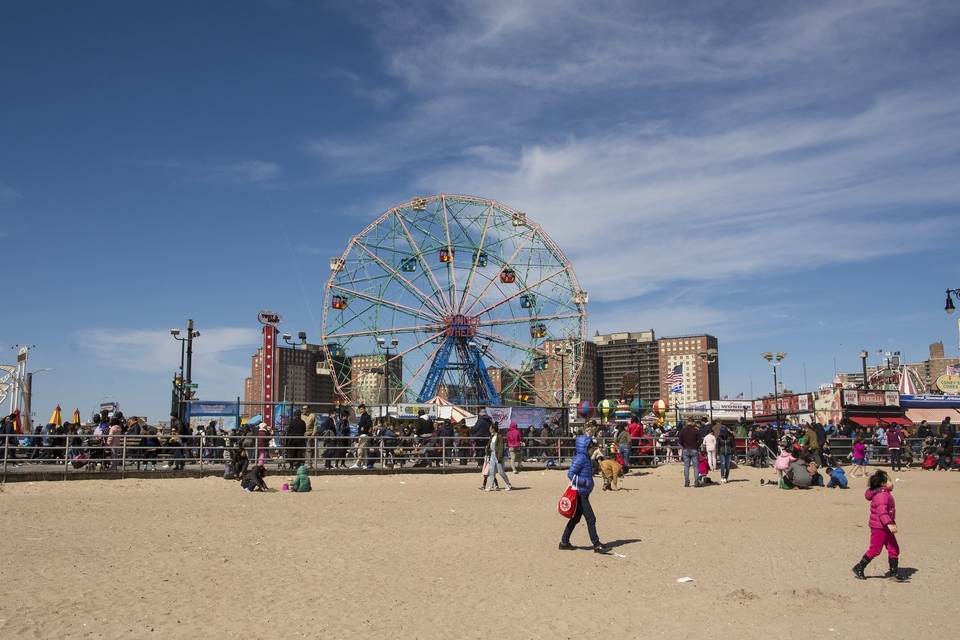
This beach needs no introduction. Famous for its Wonder Wheel, Luna Park, and its annual Mermaid Parade and 4th of July hot dog eating contest, Coney Island draws millions of visitors every year. Spend a day relaxing on the beach, and then have a great meal on Coney Island’s boardwalk.
Brighton Beach
Located to the east of Coney Island, Brighton Beach is a quieter alternative to Coney Island. Known by locals as “Little Odessa” for the neighborhood’s Russian enclave, Brighton Beach offers great Russian dining right on the boardwalk.
Manhattan Beach
Manhattan Beach is a favorite among families in South Brooklyn. This is the least accessible of the three beaches, but for those willing to travel, you can enjoy a quieter, less crowded beach experience.
7. You don’t have to leave Brooklyn to enjoy excellent shopping.
There are so many things to do in Brooklyn, and shopping is certainly one of them. Sixth Avenue in Manhattan may be one of the city’s premier shopping destinations, but Brooklyn offers a shopping experience all its own, with everything from high-end designer shops and thrift stores to artisanal shops that sell only cheese.
Fulton Mall
Fulton Mall is less of a suburban shopping mall and more of a long pedestrian street lined with shops and eateries. It’s considered one of Brooklyn’s top shopping districts, and you can find major retailers like Macy’s, H&M, Gap, and Modell’s Sporting Goods.
City Point
Not far from Fulton Mall is City Point, an enormous new development in Downtown Brooklyn that houses a Target, Century 21, New York City’s very first Alamo Drafthouse, a Trader Joe’s, and more. But that’s not all: if you go into the basement of City Point, you’ll find DeKalb Market Hall, a food hall with dozens of famous and diverse NYC vendors, including Katz’s Deli, Fletcher’s BBQ, Ample Hills Creamery, and the Arepa Lady.
Atlantic Terminal
The Atlantic Terminal was supposed to be the site of a giant baseball stadium for the Brooklyn Dodgers, but the plan fell through in the ’50s. Today, it’s a multi-level shopping mall located across the street from the Barclays Center, with a Target, Victoria’s Secret, Bath & Body Works, Burlington Coat Factory, and a Marshall’s. And since there’s a subway station in the basement, Atlantic Terminal is easy to get to for quick shopping chores.
The Original Century 21
Did you know the original Century 21 was founded in Bay Ridge, Brooklyn? The store is still there on 86th Street, and it offers shoppers from all over the world major bargains on designer clothing and fine European accessories—if you’re willing to rummage a little to find them!
IKEA
Open in Red Hook since 2008, IKEA is the ultimate shopping destination for Brooklynites seeking affordable and apartment-friendly furniture. In fact, this IKEA is so popular that it has its own water taxi from Manhattan. But for those in Brooklyn without a car, the best way to get to IKEA is by taking one of the free shuttle buses from Park Slope or Borough Hall—just make sure you can fit your IKEA haul on the shuttle bus on the way back home!
Brooklyn Boutiques
If you prefer to get away from the big box stores, Williamsburg, Carroll Gardens, Park Slope, and Prospect Heights are the neighborhoods to visit. These neighborhoods are famous for their independent boutiques for fashion-forward and eco-conscious shoppers, artisanal shops and craft stores for the perfect one-of-a-kind gift, as well as thrift and vintage troves for those looking for the perfect retro touch for their home.
New Resident Tip:
Keep an eye out for the famous Brooklyn Flea market on weekends. The Brooklyn Flea changes locations depending on the season, so follow the Brooklyn Flea on social media to figure out where it will be this week. You’ll find hundreds of vendors for furniture, vintage clothing, collectibles and antiques there!
8. Brooklyn has amazing museums.
Manhattan may be famous for its Museum Mile, but you don’t have to head into the city to immerse yourself in art. Brooklyn has a number of renowned institutions that will fill your weekends with beauty and culture, including:
Brooklyn Museum
Founded in Prospect Heights, the Brooklyn Museum is a world-famous landmark and the third largest museum in New York City. The museum’s collection is massive, with over 1.5 million works of art including Egyptian antiquities, Japanese art, and American art from the Colonial period. You will literally never run out of art to see there.
Brooklyn Botanic Garden
Located just a short walk away from the Brooklyn Museum is the Brooklyn Botanic Garden, a 52-acre botanical garden that attracts nearly a million visitors each year. It’s famous for its bonsai collection, climate-themed plant pavilions, rose garden, and its annual Cherry Blossom Festival. It has more than 200 cherry trees, making it the most popular cherry blossom viewing site outside of Japan.
New York Transit Museum
Train nerds, children, and vintage fans alike will have a blast at the New York Transit Museum, located in Downtown Brooklyn. The museum is housed in a circa-1936 subway station and has rotating exhibits and a collection of restored trains. During the holidays, you can take a ride on one of the museum’s vintage 1930s subway cars for a truly old-school New York experience that’s fun for the whole family.
Museum of Food & Drink (MOFAD)
The Museum of Food & Drink is the world’s first museum dedicated exclusively to, you guessed it, food! Founded in 2015 in Williamsburg, MOFAD is the place to be for foodies, and the museum is dedicated to inspiring chefs, preserving endangered regional cuisines, and educating people about how the food they eat is produced and distributed.
The Brooklyn Historical Society
If you want to truly immerse yourself in the history of Brooklyn, the Brooklyn Historical Society is the place to go. Visit the famous Othmer Library and see historical documents, including maps and atlases of Brooklyn. This museum is also a popular wedding venue for couples seeking a refined backdrop for their big day.
Planning on Moving to Brooklyn, New York?
Whether you’re moving to experience life in a new city, relocating with your family, or making a career change, you’ll be charmed by Brooklyn’s culture and diversity. In a borough this big, you’ll never run out of places to explore and people to meet.
No matter where you’re moving from, you’ll likely need some help storing your bigger, bulkier items—especially in a borough like Brooklyn, where space is at a premium. Life Storage offers a variety of self-storage sizes for all the items in your life that won’t fit in your small Brooklyn closet.






